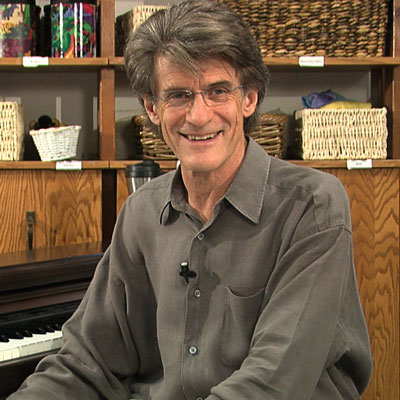
An Interview with Singalong Storybook Author Ken Guilmartin
Q: Music Together has been around for 25 years, but you just started writing and publishing children’s books! How did that idea come about?
KG: It’s really an organic part of our evolution to create these beautiful storybooks. Our philosophy has always been about bringing children and their special grownups together through music. We choose songs that tell compelling stories or captivate the imaginations of children and grownups alike with creative and playful words, sounds and movements. We have always encouraged families in the Music Together program to use our songbooks like storybooks, but I always thought what fun it would be to take some of our most popular songs and make fully illustrated storybooks for families to enjoy. The illustrations bring the song alive visually, and stimulate more interaction—with the song, as well as among the readers.
Q: So the books are not just stories—they encourage interactivity? Can you explain that?
KG: Well, the way we do songs is very interactive, so here’s opportunity to bring that into the book reading experience. Some grownups do this naturally when they read stories to children—they make extra comments, ask questions—or generally ham it up! I think the song makes that kind of interaction more likely. It gives both the adult and child a way to make the words really come alive. And since we emphasize an attitude of playing with the song rather than “performing” it, it’s especially liberating for grownups who sing only in cars and showers! It’s private, family time, not public performance time. We want to encourage this excitement and exploration, so with each storybook we include activity ideas that encourage using the illustrations and the story in exciting ways that inspire learning and imaginative play.
Q: What kinds of activities do you mean? Which are your favorites?
KG: One Little Owl is an amusing book with lots of opportunity for creative play. Children can use their imaginations to put their own silly animals or other unusual things in the tree—even cows, backhoes, and dinosaurs! And since children delight in making animal sounds, once the book has become familiar, an adult can sing or say the beginnings of phrases—“one little owl said…,” and the child can “read” the sounds that each animal makes as the adult points to the words. Over time, children will link the sounds they enjoy to the words and letters on the page.
In She Sells Sea Shells, we have pages at the end of the book suggesting that parents show their child the shells the girl in the story is collecting and then invite the child to find and point to the ones that are “brown and gray and blue, yellow, pink, white, green.” I also love that we suggest looking at the shells the girl is carrying on her tray and asking readers whether they are in the same order as in the song: “oyster, mussel, snail, periwinkle, clam.” You can also look at the shells in the book with the child and then compare them to real shells, or to other things you may have found.
In Hello, Everybody!, we have such fun ideas in the back of the book. Children love this song because it invites them to playfully explore the concrete and fascinating world around them, even after they put the book down. For example, we suggest singing “Hello to my bathtub, so glad to see you! Hello to the bubbles, so glad to see you, too”—and so on, throughout your day. We also suggest that as a family you could sing “hello” to everyone sitting at the dinner table or arriving for a birthday party. Sing “hello” to someone coming home from work or from preschool, or just from the other room—and watch the smiles appear!
Q: So these are not “just books”!
KG: Our mission is to encourage community and family music-making and bonding. Reading, singing, and connecting over the beautiful illustrations in these books all help achieve that. Our stories, the songs that go with them, and their stunning artwork do indeed make these “not just books.” And in this day and age, with electronic screens and even books on screen, it’s extra-special—for both you and your child—to snuggle together and get lost in a physical book with actual pages.
Q: Do you think the next generations of children will not know what a “real” book is?
KG: It does seem likely that everyone will be reading on screens of some kind. And there will be the advantages of sound and interactivity. But nothing can replace the touch and feel of a real book, the cadence of turning pages and discovering what’s “inside.” It’s easy to forget that children learn best when more than one sense is engaged—the visual, of course, but also kinesthesia, and even olfactory. But perhaps most important is the interaction with a parent or other grownup—books are so warm and cozy. It’s up to teachers, parents, grandparents, and caregivers to keep the magic of real books—like the magic of informal music-making—alive in their homes and classrooms.
Q: What children’s books are among your own personal favorites?
KG: I remember a favorite when I was little was “Snuffy the Tugboat,” and also, the earlier works of Dr. Seuss. My daughter and I also loved reading “Goodnight Moon” together.

Founder/Director of Music Together LLC and coauthor of Music Together. Ken conceived and led the development of the innovative Music Together program for the Center for Music and Young Children, which he founded in 1985. He has composed numerous scores for off-Broadway and regional theatre productions and is a popular presenter of early childhood and music education conferences. He has created music programs and conducted teacher training for numerous early childhood centers nationwide. A graduate of Swarthmore College, he studied composition and pedagogy at Manhattan School of Music and is certified in Dalcroze Eurhythmics by the Manhattan Dalcroze Institute.



